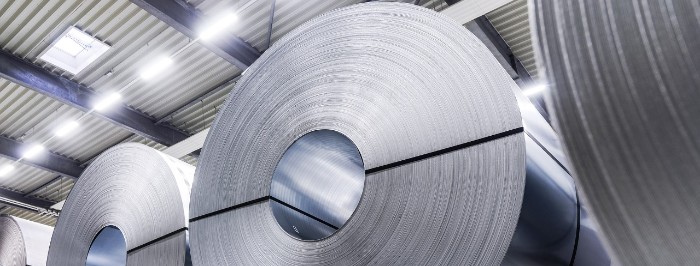GREEN STEEL
The term "Green Steel" has been all over our industry for a while now. But if you take a closer look at the topic, you quickly realize that there is no universal definition for green steel. The term is rather used at the moment to describe steel that is produced in a CO2-reduced manner. A similar situation can be observed with certificates and labels. The first producers are having their steel certified as "green". However, these certificates vary and are therefore difficult for customers to compare.
We have eliminated that problem by developing an universal definition that is based on customers demand, steel producer perspectives, steel production technology routes and the GHG Protocol as the leading carbon accounting standard.

The result is ground-breaking and will help our customers build sustainable value chains and achieve their sustainability goals.
'GREEN STEEL' - WE DEFINED SIX CATEGORIES


✔ |
Methodology along international standards Calculation methodology follows internationally renowned GHG Protocol |
✔ |
Emissions from raw material to production Emissions include production (S1), purchased power (S2) & supply chain (S3U) |
✔ |
No offsetting included in CO2 load categorization (compensation data as add-on) Physical production emissions determine categorization |

✔ |
Separate category for 'balanced' green steel Emission re-balancing between steel volumes from the same mill results in a calculated instead of a physical carbon footprint – separate class acknowledges efforts of players with physical reduction |
| Background on 'balanced' • All steel passing through a production pathway has physically the same carbon footprint • Accounting-wise, this footprint is sometimes converted between steel quantities in tons of steel with higher and lower carbon footprints |
|
More background information on the scopes

Scope 1 includes all emissions that are directly caused by the company. Examples for a steel producer are:
- Emissions at own steel manufacturing plants
- Emissions from own company vehicles

In Scope 2, emissions are recorded that result from the consumption of purchased energy. This includes:
- Emissions from purchased electricity
- Emissions from district heating and cooling for own use

Here, emissions are recorded that occur even before the company's own entrepreneurial activity. Examples for a steel producer are:
- Purchased goods like raw materials (e.g. coke and iron) and other services
- Production of fixed assets
- Transport of purchased goods to the steel producer's facilities

In turn, Scope 3 Downstream summarizes emissions that occur after the company's own entrepreneurial activities. Examples for a steel producer are:
- Processing of the sold steel products
- Use of the sold steel products
- Transport of the sold steel products to distributors like Klöckner & Co
WHAT ARE THE BENEFITS FOR CUSTOMERS?





WE ARE YOUR GLOBAL PARTNER FOR GREEN STEEL
- Products across all six categories
- Broad variety of products available
- Serving Europe and North America
MORE INFORMATION
CONTACT US
Do you have any questions concerning the categories or would you like to learn more about the topic? Then send us a message below and our experts will be happy to help you.
Form Success Title
Form Success Text


